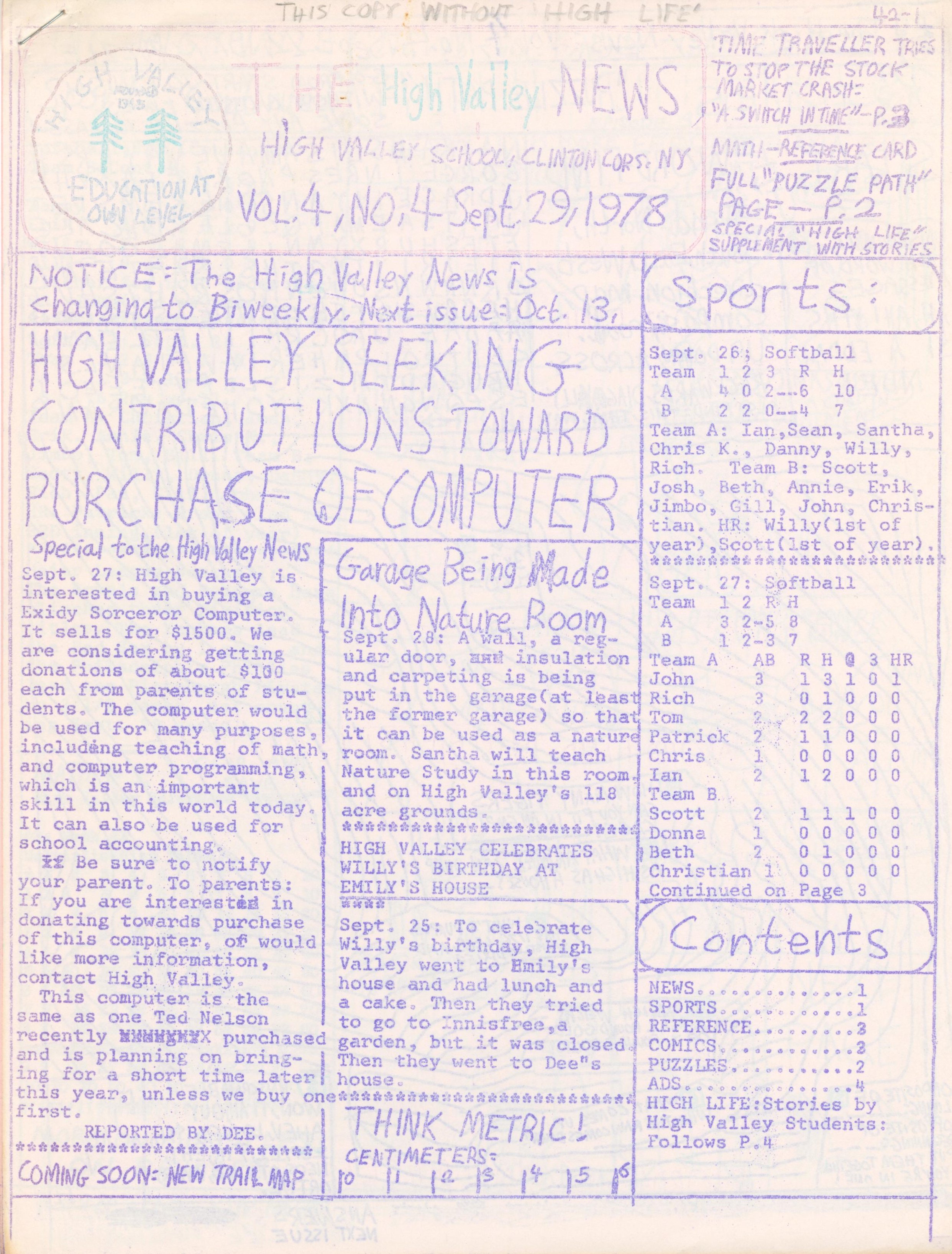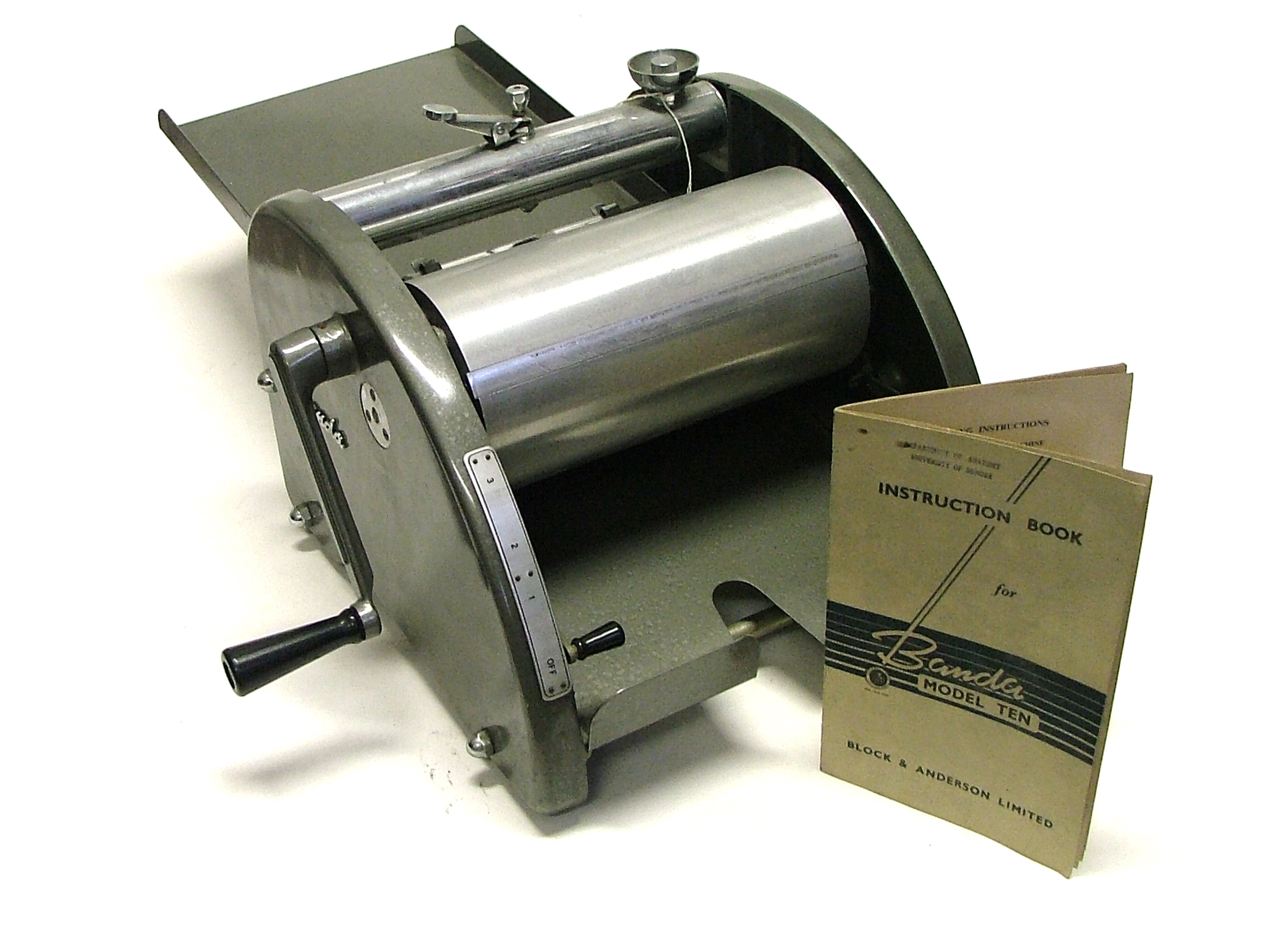
In the 1982 movie Fast Times At Ridgemont High, a classroom of students receives a set of paperwork to pass backward. Nearly every student in the room takes a big whiff of their sheet before setting it down. If you know, you know, I guess, but if you don’t, keep reading.
Those often purple-inked papers were fresh from the ditto machine, or spirit duplicator. Legend has it that not only did they smell good when they were still wet, inhaling the volatile organic compounds within would make the sniffer just a little bit lightheaded. But the spirit duplicator didn’t use ghosts, it used either methanol (wood alcohol), isopropyl, or, if you were loaded, ethyl alcohol.
Invented in 1923 by Wilhelm Ritzerfeld, ditto machines were popular among schools, churches, and clubs for making copies of worksheets, fliers, and so on before the modern copy machine became widespread in the 1980s. Other early duplicating machines include the mimeograph, the hectograph, and the cyclostyle.
Getting A Handle On Duplication
To use the ditto machine, one would first make a master copy using a special sheet of paper with a special type of waxy ink on the back that dissolves in alcohol. These types of sheets are still around today, in a way — if you’ve ever gotten a tattoo, you know that they don’t usually just freehand it; the artist will draw out your design on special paper that they can then use to lay down a temporary tattoo on your freshly-shaved skin before going for it.

But don’t get too excited; tattoo transfer sheets aren’t compatible with ditto machines for a number of reasons. As I mentioned, ditto sheets use alcohol to transfer the ink, and tattoo sheets use heat and pressure. They’re too thin for the mechanics of the ditto machine’s drum, anyway.
So once you’ve typed or drawn up your master sheet, you’d mount it on the drum of the ditto machine. Then, with a big crank handle, you’d roll the drum over sheet after sheet until you had what you needed. The average master could make roughly 50 to 500 copies depending a number of factors.
The rise of higher-quality master sheets is largely responsible for this wide range, but there are other factors at play, like the color that gets used. Purple was made from a dye called aniline purple and lasted longest on paper, although there was also green, red, and black. You see a lot of purple dittos because of its vibrancy and the fact that it was highly soluble in alcohol.
The type of paper entered into the equation as well: absorbent paper like newsprint would make fewer copies than smoother, less porous bond paper. And, as you might imagine, dense text and images used more ink and would wear out the master faster.
As with many paper-based things from decades ago, the durability of dittoes is not so great. They will fade gradually when exposed to UV light. Although there is no citation, Wikipedia claims that the average ditto would fade in direct sunlight after about a month. It goes on to assume that most ditto machine users printed onto low-quality paper and will eventually “yellow and degrade due to residual acid in the untreated pulp”.
Not a Mimeograph
It’s worth mentioning that mimeographs are not quite the same thing as ditto machines. For one thing, ditto machines were often hand cranked, and many mimeographs were motorized. Interestingly enough, the mimeograph predates the spirit duplicator, having been patented on August 8, 1876 by Thomas Edison and popularized by the A.B. Dick Company in the 1880s.
Also known as stencil duplicators, mimeographs were a competing technology that used ink and stencils to produce 50 to several thousand copies. A special stencil sheet bearing a wax coating would be typed on a regular typewriter with the ribbon disengaged and the machine set to this mode, and/or written or drawn upon using a special stylus and lettering guides.
The stencil sheet would then be fed into the machine, which had a large drum with an ink pad. The mimeograph would then squish ink through the stencil and onto the paper. You can see all this and more in the video below, which illustrates just how much of an art this whole process was compared to makin’ copies today.
Mimeographs were largely done in black, but color could be done “easily”, as the video demonstrates. You basically had to hand paint the colors onto your stencil. It doesn’t seem as though changing out the giant ink pad was an option. Unlike dittoes, mimeographs required better paper, so they should last longer in theory.
Before You Run Off
Duplication for the common man is as important as the printing press itself. While today you might just set the printer to provide the number of copies you need, the history of duplication shows that we’ve come a long way in terms of effort on the user’s end. Keep this in mind the next time you want to go Office Space on it.